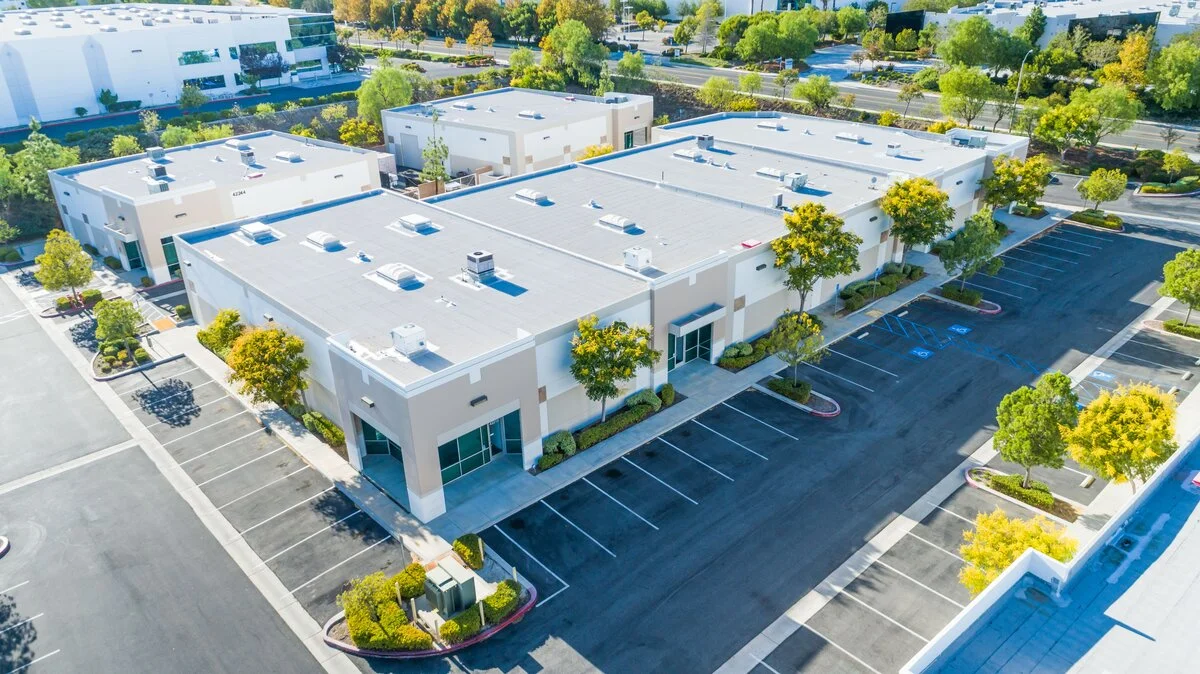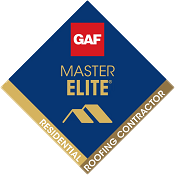You may have noticed that many commercial buildings have flat roofs. Did you ever wonder why?
What Is a Flat Roof?
A flat roof is a roof which is almost level in comparison to the building it covers. Flat roofs are not completely flat, however. Most have a pitch (or slope) of 1/4 inch per foot or less so that water will drain off.
Many commercial buildings, such as office buildings, warehouses, and storage facilities, have flat roofs. Though sometimes maligned, flat roofs can actually be a great choice for certain types of structures.
Advantages of Flat Roofs for Commercial Buildings
Here are 6 reasons that many commercial buildings have flat roofs.
Less Expensive to Build
One advantage of flat roofs for commercial buildings is that they are typically less expensive to build than pitched roofs. This is because less material is needed and there is less labor involved in the construction.
Lower Maintenance Needs
Flat roofs are less dangerous to work on and much easier to access and maintain than pitched roofs. This is important because it means that any repairs or maintenance that needs to be completed can be done quickly and easily without the need for special equipment or training.
More Usable Space
Flat roofs offer more useable space than pitched roofs. That’s because there are no unusable areas due to slopes or angles as there can be with a pitched roof. This can be a significant positive for commercial buildings, which often need all the space they can get.
Greater Flexibility in Use of Space
Another advantage of flat roofs for commercial buildings is that they offer greater flexibility in the use of space. This can be particularly beneficial for businesses that need extra storage space or outdoor areas for employees. For example, a warehouse with a flat roof can utilize the entire roof as additional storage space without obstruction.
Good for HVAC and Solar Panels
Flat roofs provide a perfect service for air conditioning and heating units, and even telecommunications equipment that would otherwise have to be located on the ground near the building. They are also the ideal place for solar panels.
Good Wind Resistance
A properly installed flat roof can resist winds quite well. In areas that are susceptible to high winds, this can be a major advantage.
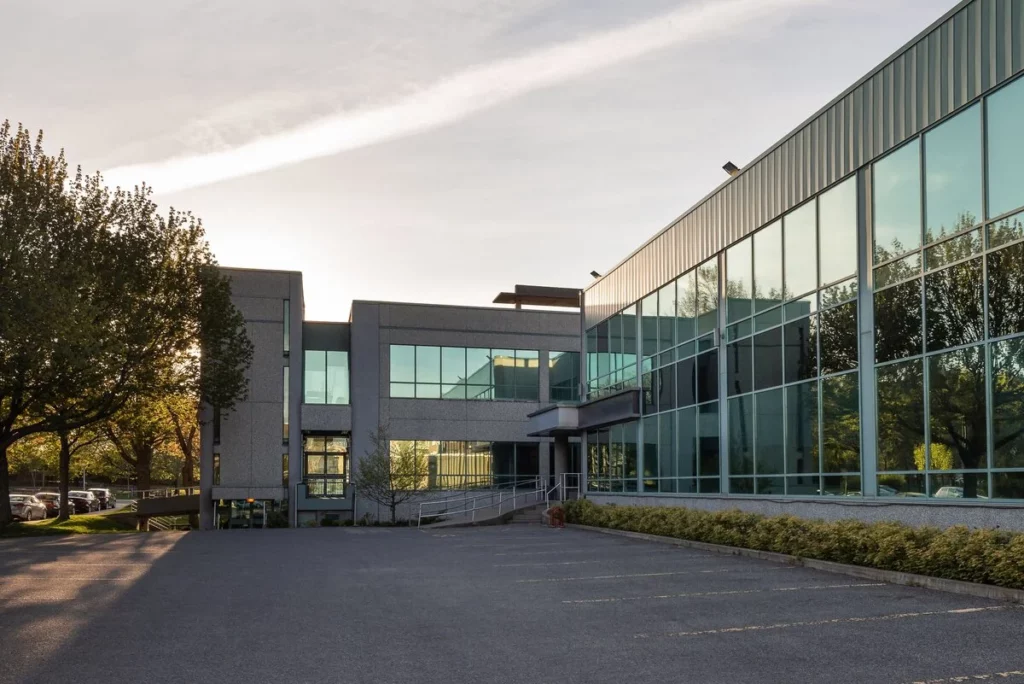
Disadvantages of Flat Roofs
As with any type or style of roof, there are also some disadvantages of flat roofs for commercial buildings.
Potential for Ponding Water
One potential problem with flat roofs is ponding water. This occurs when water does not drain properly and pools on the roof. While most commercial flat roofs are designed to prevent ponding, it can still happen if the roof is not maintained properly or if there is a sudden downpour of rain. Ponding water can damage the roof and lead to leaks, so it is important to take steps to prevent it.
Shorter Lifespan
Another disadvantage of flat roofs is that they typically have a shorter lifespan than pitched roofs. This is due to the fact that water can more easily seep into flat roofs and cause damage. With proper maintenance, however, a flat roof can last for many years.
Cooling Costs
Depending on the specific commercial flat roof material used, some low-slope roofs are less energy efficient than pitched roofs because they absorb more heat from the sun. This can lead to higher cooling costs in the summer months.
Aesthetics
Some people think flat roofs are not as visually appealing as pitched roofs because they lack the traditional “look” of a roof.
Types of Flat Roofing Materials
There are several types of commercial flat roof materials.
Single-ply Membranes
This type of roofing material is a single layer of synthetic rubber, PVC, or TPO that is applied to the roof in sheets. Single-ply membranes are popular because they are easy to install and repair and are available in a variety of colors.
Modified Bitumen
Modified bitumen is a type of asphalt roofing that is reinforced with fiberglass or polyester. It is available in rolls and can be applied with heat or cold adhesive.
Built-Up Roofing
Built-up roofing is a type of roofing that consists of multiple layers of industrial-grade fabric, felt, or paper applied with hot asphalt or tar and covered with a layer of gravel. This type of roofing is durable and long-lasting, but it can be difficult to repair. BURs are suitable for commercial buildings with roofs with a pitch no more than 3-in-12.
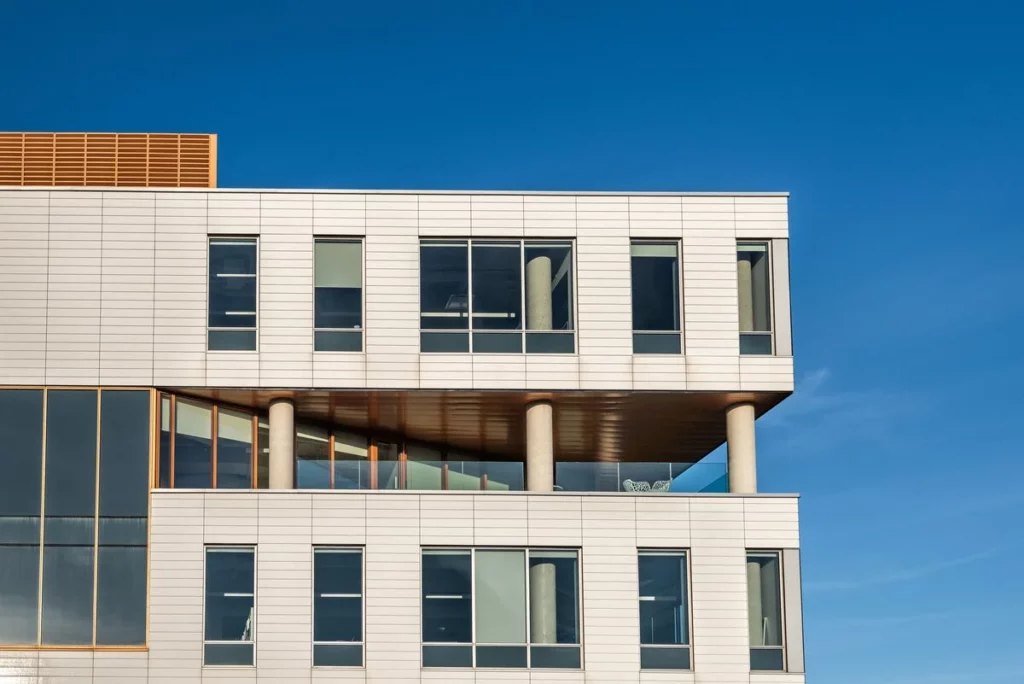
Drainage for Flat Roofs
When it comes to commercial roofing, one of the most important considerations is drainage. A good drainage system is essential for keeping a flat roof in good condition and ensuring that it will last for many years. There are 3 main types of drain systems for flat commercial roofs: interior drain systems, gutters, and scuppers. Here is a brief overview of how each option works.
Interior Drain Systems
An interior drain system is a network of pipes that are installed around the perimeter of your roof. These pipes collect water from the roof and funnel it to a central location where it can be safely discharged. Interior drain systems are very effective at preventing water damage to your roof, but they can be expensive to install and maintain.
Gutters
Gutters are installed along the edge of your roof and collect water as it runs off the sides of your roof. The water is then directed away from your building through a series of downspouts. Gutters are a less expensive option than interior drain systems, but they require more maintenance because they can easily become clogged with debris.
Scuppers
Scuppers are drains that are installed at the low points of your roof. They allow water to run off your roof and prevent ponding (the buildup of rainwater on your roof). Scuppers are a good option if you live in an area with moderate rainfall, but they will not be sufficient for areas with heavy rains or snowfall.
All 3 of these options have their own advantages and disadvantages, so it is important to consult with a roofing professional before making a decision about which type of drain system is right for your roof. With so many factors to consider, choosing the right drain system can seem daunting, but luckily there are experienced professionals who can help you navigate this complex decision.
Importance of Flat Roof Maintenance
Commercial flat roof contractors will tell you that maintenance is the key to extending the lifespan of a flat roof. Here are a few reasons why.
Lifespan
A well-maintained flat roof can last up to 50 years, whereas an unmaintained roof may only last 10-15 years. By regularly maintaining your roof, you can ensure that it will last for many years to come.
Avoid Expensive Repairs
Another reason why commercial flat roof maintenance is important is because it can help prevent expensive repairs or even roof replacement. Many problems with flat roofs can be prevented with regular maintenance. For example, if you regularly clean your gutters and downspouts, you can prevent water from pooling on your roof and causing serious damage. Similarly, if you regularly inspect your roof for leaks and repair them as soon as possible, you can prevent small leaks from turning into big ones that will cost a lot of money to repair.
Improve Energy Efficiency
Commercial flat roof maintenance is important because it can help improve the energy efficiency of your building. A well-maintained flat roof will be better able to reflect heat in the summer and retain heat in the winter, which can lead to lower heating and cooling bills for your business. In addition, a well-maintained flat roof may also qualify you for certain energy-efficiency tax incentives.
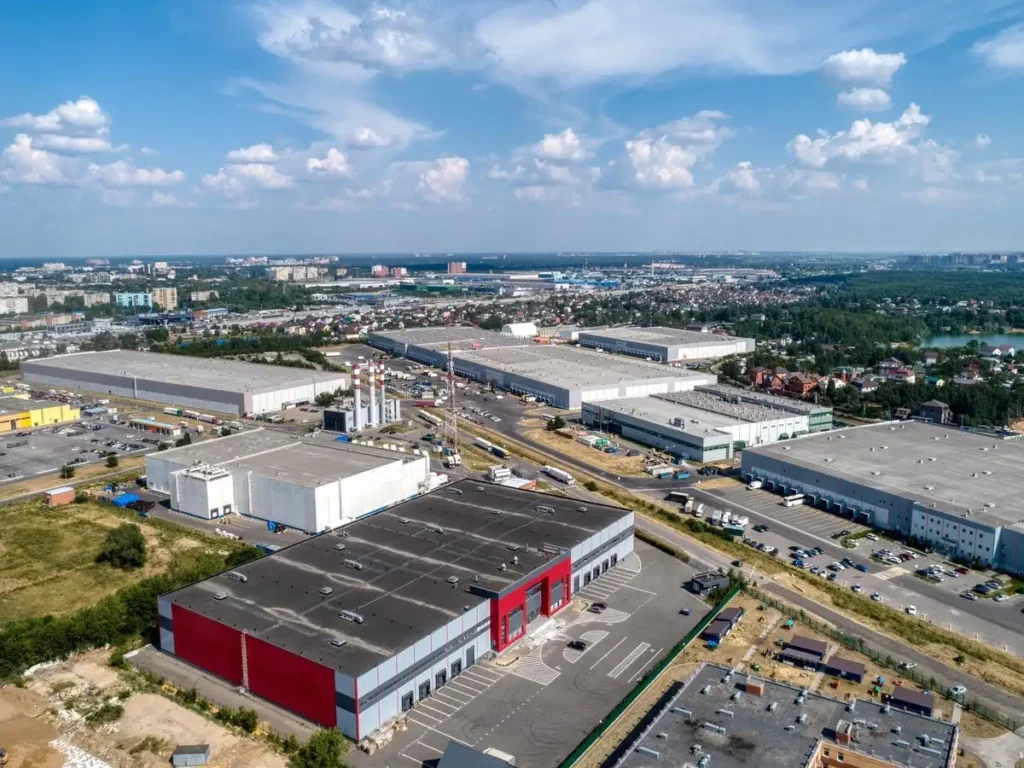
Tips for Maintaining Your Commercial Flat Roof
Here are 5 tips for taking care of your roof on a regular basis:
Perform Regular Inspections
Flat roofs should be inspected more frequently than sloped (or pitched) roofs. You should inspect your roof at least twice a year, in the spring and fall. During your roof inspection, look for any cracks, holes, or other damage. If you see any damage, make sure to repair it immediately to prevent water from seeping in and causing further damage.
Keep Your Gutters Clean
If the building has a gutter system, make sure to keep them clean and free of debris. Clogged gutters can cause water to back up, leading to leaks. To clean your gutters, use a ladder and wear gloves to protect your hands from sharp edges. Use a garden hose to flush out any dirt or debris. If you do not feel comfortable cleaning your gutters yourself, you can hire a professional gutter cleaning service. Just make sure that they have experience cleaning commercial flat roofs.
Trim Trees Near Your Roofline
Trees that are close to your roofline can drop leaves and branches onto your roof, which can lead to clogged gutters or other drainage problems. To prevent this from happening, trim any trees near your roofline on a regular basis. You can do this yourself with a ladder and pruning shears, or you can hire a professional tree service.
Keep Your Roof Free of Debris
Leaves, twigs, and other debris can accumulate on your roof and clog drains, or they can remain on the roof while they decompose. This can lead to water build-up and eventually leaks. To prevent this from happening, make sure to remove any debris from your roof on a regular basis. You can use a leaf blower or rake to remove light debris, but for heavier debris like branches, you’ll need to hire a professional roofing company.
Hire a Professional Roofing Company for Repairs
If you see any damage during your inspection or if you have any questions about maintaining your roof, be sure to contact a professional roofing company right away. Research different companies in your area and read online reviews before making your decision. A good roofing company will be able to quickly diagnose the problem and provide an effective solution.
Maintenance is key when it comes to extending the lifespan of your commercial flat roof. You can help prolong your roof’s life expectancy by performing regular inspections, keeping your gutters clean, trimming trees near your roofline, keeping your roof free of debris, and hiring a professional company for repairs.
Is a Flat Roof Right For My Building?
There are many advantages of flat roofs for commercial buildings, including being less expensive to build, offering greater flexibility in the use of space, and improved drainage. If you are considering a new commercial building, a flat roof may be the right choice for you. A professional roofing contractor with experience in commercial flat roofing can help you decide which options will work best for your situation.
Your Lakeland Roofing Company
The best roofing company in Florida for all your commercial roofing needs is right here.
If you are looking for commercial roofing near me, contact Stronghold Roofing and Solar in and near Lakeland, FL today. We are a licensed, certified, and insured company offering a full range of roofing services to meet your needs.
Reach out today for a free estimate.
